This post may contain affiliate links.
Growing papayas in the tropics is super easy. Or, at least, I’ve been able to grow them with no problems in a tropical climate so I think you should probably be able to too. Here in Queensland Australia, they call papayas pawpaws. Well, I’m from Europe, they’ll always be papayas to me. Pawpaw is actually a plant from North America. Papayas are a tropical fruit, after all, I first ate papayas in South and Southeast Asia, but they grow pretty well here in the southern hemisphere too. So well, that we usually have more than we can possibly eat. Thoughts and notes on growing, picking, and using papayas in the tropics.

Papayas are originally from Mexico and Central America, they grow well in Florida, Southeast and South Asia, North Australia, and most tropical regions. You can, certainly, grow them in the sub-tropics, but a frost is likely to kill them. Growing them near a heat-holding brick wall will help keep them a little warmer in winter.
Papaya plants produce a huge amount of food, but they do take a little while to get going. I’d pop along to a nursery and buy a bisexual plant today, that way you know you’re getting a bisexual plant. You can clone them, by air layering, but it’s not something I’ve tried as yet. Doing this will produce another hermaphrodite plant.
If you plant a whole bunch of seeds from a papaya you’re eating, you’re pretty certain to produce both male and female plants, but it will take a while to know which is which. You’ll need to keep one male (or a hermaphrodite) to fertilise your females.
Growing Papayas in the Tropics
Growing papayas is pretty easy, so long as you have OK soil, (the better the soil the better your papaya plants and fruit will be,) good sunshine, and enough water. You can grow them from seed or from store-bought small plants.
Papaya plants are perennials and can be male, female, or both. Knowing the difference is quite important. Papayas can produce fruit all year round, more or less, particularly if you have multiple plants.
One of the best tips for new gardeners is to only grow the food plants you actually eat. If you enjoy sweet papaya fruit, go buy a plant right now and get it in the ground. It will be a while before it produces fruit, so get it started.
As those fruits ripen and you eat them, plant the seeds. You will grow a forest of papaya plants.
Papayas can also be useful shade and support plants in the garden. A single papaya can be huge, several Kg of food, and as you can eat the fruit green, or ripe, they’re a great survival or subsistence plant.
Can You Grow Papayas from Store-Bought Papaya Seeds?
I suspect you can, but honestly, I’ve never tried. I’ve grown new papaya plants from the seeds of my own home-grown papayas and that was an interesting experiment, they don’t breed true.

As you can see above, the papaya plant grown from my original bisexual papaya plant was round, smaller, and less sweet, but still good. I also ended up with a female plant, every flower is female, just about every flower gets pollinated. That’s a lot of fruit.
The female plants are (in my experience) far more prolific than the bisexual plants. I’ve never seen an all-male papaya plant as yet, but our photos of male and female papaya flowers should help you tell them apart. The difference between male and female flowers is less pronounced in bisexual flowers than in male and female plants.
Male, Female, and Bisexual Papaya Plants and Flowers
Spotting the different genders of papaya flowers is quite tricky, but we have some photos below to help you identify them.


Papaya plants can be bisexual or hermaphrodite ie. they can be male and female. I’ve read that the flowers are actually bisexual, with both male and female plants, but I’ve never seen this. My biology (I have a Biology degree and spent 20 years dissecting things!) training has even made me dissect the flowers, and no, no sign of this thus far.
We’ve just bought a farm, so I’ve swapped my old papaya plans for a whole new bunch. I’ll be standing on a chair inspecting the papaya flowers closely very soon!
My bisexual papayas (all bought from nurseries) have separate male and female flowers. Because it produces both types of flowers, it produces fewer fruit than my female plants, but they are bigger and sweeter.
I’m still inspecting papaya plants closely, but I’m yet to see the elusive bisexual flowers. They must exist, reliable sources say they exist.
The male papaya flowers tend to be long and skinny and are produced in short clusters often. These produce the pollen. A male plant will never produce fruit.
If you only have a female plant, you need to have a male of hermaphrodite plant nearby for pollenation.
Can You Prune Papaya Plants or Trees?
Yes you can prune a papaya. If your papaya is getting so tall that you can’t harvest the fruit you can cut it down to a more manageable height. When you do this the plant will likely throw out multiple branches, each bearing flowers and fruit. You should probably trim these back to a manageable number.
If you don’t prune papayas, they keep growing upwards, a single tall stem with a crown of leaves, fruit, and flowers. You won’t be able to pick them unless you cut them back or purchase a long-handled large fruit-picking device such as this.
If you have to cut a papaya back, and it’s a plant that produces fruit well, consider air-layering the plant to produce a second clone of your original papaya plant.
Do Bats and Birds Eat Papayas?

Yes they do, parrots and fruit bats love papaya along with some smaller species of birds (eg. fig birds) It’s a battle of nerves. Do you leave papayas on the plant until they are sweet and orange? Or pick them green to ripen indoors? I’d pick them early, with just a little orange starting to show. Once they’re ripe they’re bird, bat, and fruit fly attractors.
If a fruit bat gets hold of your papaya you’ll likely see multiple small puncture wounds oozing sap. These are from his toenails. I won’t eat the fruit when this happens. I’d maybe cut off all the damaged parts and make jam, but bats carry too many diseases for my liking.
Can You Eat Green Papayas?

Green papayas are edible but they won’t be sweet like the fully ripe orange and red-fleshed fruit. The flesh of a green papaya is white to green and the seeds will be pale. Green papaya salad is a classic dish in Southeast Asia, particularly Thailand and Laos. It’s called som tum or som tam, and it’s delicious.
You should be able to grow all of the fresh ingredients in your tropical garden, just as they do in Thailand.
You can combine your green papaya, finely shredded, with other food plants from your tropical garden to make something really delicious.
Think red or green chillies, lemongrass, ginger, Thai herbs like basil, and kaffir lime leaf, the flavours of Thailand grow in the tropics. You should be able to grow most of these things well in your tropical food garden so long as you have decent soil.
Soil can be an issue, I had none when I started, just clay. Home-made mulches, fertilisers, and chop-and-drop are helping us build it.
When to Harvest Ripe Papayas

We need to harvest ripe papayas before the birds or bats get to them and that can be tricky. Sometimes the birds will peck at them long before you think they’re ripe and your morning will be spoiled by holes in your papayas.
Don’t worry, it happens to me all the time. Eclectus parrots are a particular papaya pest, destroying my papaya fruit just to eat the seeds. Sometimes you’ll also find claw marks in papayas either from birds or bats.
They’re easy to spot as the sap leaks out and the area will go black. I can’t eat a fruit that’s damaged by animals unless it’s cooked, just in case.
Your papaya fruit will be green for what feels like forever. A tiny hint of yellow or orange on the side that gets the most sun will be your first sign of ripening. Then ripening progresses fast and it’s a game of nerve.
Can you leave them another day before the birds spot the colour and the bats smell that ripe scent? The longer you leave them the riper and sweeter they’ll be. But no you dare? I’ve thought about putting nets over my papayas at this stage but never have, it could work. An old mosquito net could be perfect and I have one.
I’ve harvested papayas in spring, summer and winter with July into August and September being a particular favourite time for papayas to be ready. These are the fruit that set during the summer (wet season). Right now I have baby papayas forming in late winter (August). They seem to produce at pretty much any time of year but the wet season seems to be their favourite time to set fruit so far. I’ll keep watching and learning.
Papaya fruits really start to ripen in early spring and summer as the sunshine returns. Papayas are grown in the tropics and can ripen year-round in very hot climates, but it is in spring and into summer that we see the most ripe, orange, papaya fruit. Green papayas can be harvested year-round usually
How to Preserve Papayas
A ripe papaya, fresh from the plant can be 5 kg plus of fruit. It’s too much for our family to eat. But, luckily, there are quite a few things you can do with ripe papayas to preserve them.
Papaya jam is my personal favourite and it’s pretty quick and easy to make. I’ve made a high sugar papaya jam and a reduced sugar version with chia seeds to try and make it a little more healthy, both worked out great. A few more ideas for using up ripe, sweet, papaya below.
- papaya jam
- you can freeze papaya
- papaya curd (my next project, sounds delicious!)
- papaya crumble
- dried / dehydrated papaya
- papaya cake
- chickens can eat papaya fruit and seeds, they love it
If you can reach the ripe papaya, reach up and twist the fruit, the stem should break easily as you twist. If the papaya tree is too tall for you to reach, use a long-handled picking basket, or a ladder. A photo of a papaya picking device is being added to this post
So that’s all I’ve got for you on growing, nurturing, preserving and eating papayas today. But I’ll add more to this post, as I do with every post, when I learn or discover something new. Thanks for being here, thanks for being a gardener. Enjoy growing papayas in the tropics.
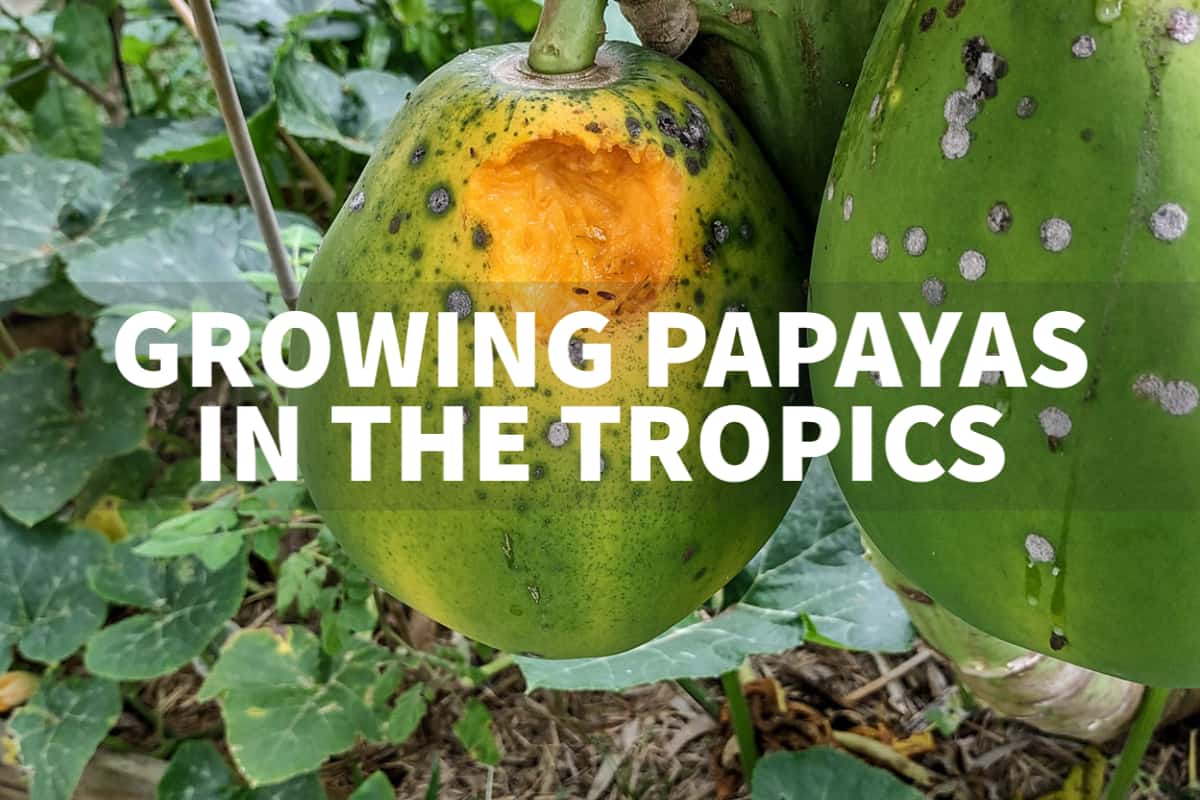


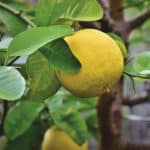

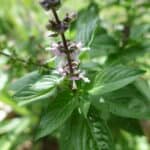
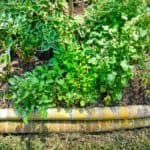
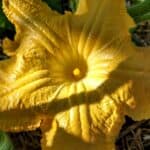

I would like to know when I could cut my papaya tree to make it shorter? what time of year?
3 of mine just died in the cyclone, just rotted in the ground. Early spring is normally recommended, if you have a winter where growth stops. Don’t let water pool on the cut stump, stck a bucket over the top or something. But as the new branches will go out sideways, pinch off flowers until you think the branches can support the weight, or they’ll snap off. Which has happened to me!